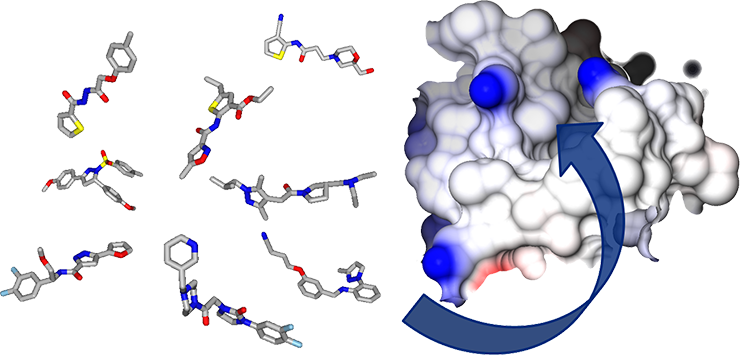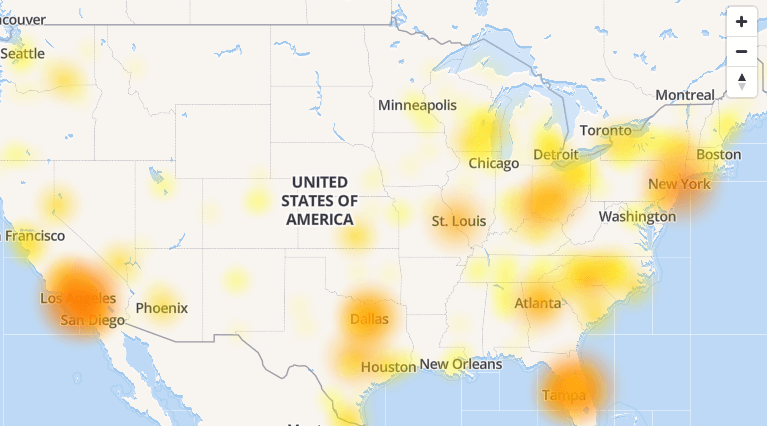The computer aided drug design process is what you need to understand in order to help you get the results you want when using the software. This information will help you with understanding the basics, what to look for and what to expect.
The computer aided drug design process, also known as CADD (Computer-Aided Drug Design) can be used to help pharmaceutical companies produce safer drugs that are more effective and more profitable. The process is used to create a new drug by taking an existing drug and altering its chemical structure in a manner that enhances or improves its therapeutic value. It is a systematic way of going about creating new medicine.
This is a basic overview of the computer-assisted drug design process. This will get you up to speed on what a computer is capable of doing, and then give you a better understanding of how it can be used in designing better drugs to combat illnesses that affect millions of people around the world.
There’s a lot of confusion out there about what goes into computer aided drug design. And if you ask ten people, you could get ten different answers. This process has changed in recent years. New techniques are now available, and new machines are being used to do the work for you. But, are you getting what you should be getting? And, what do you need to know to make sure that the results are correct? In this article, we’ll try to answer these questions.
There is a lot to know about computer aided drug design (CADD), but not many people know all of it. CADD is used to find new drugs and new targets for existing drugs. In this post, we’ll go over the steps of the drug discovery process and show you how they work.
The drug discovery process is a long and complex one. There are over 2 million chemicals in existence, and there are a lot of steps to take before you find a drug that is effective. But the good news is that it doesn’t have to be so hard.
Today, we’ll explain the CADD process and how it helps you find the right chemical that can be used to treat diseases like cancer.

Introduction to computer aided drug design
CADD is an acronym for computer aided drug design. It is used to find new drugs and new targets for existing drugs. In this post, we’ll go over the steps of the drug discovery process and show you how they work.
Drug discovery is a lengthy process that can take years or even decades to complete. During this time, the pharmaceutical industry is constantly trying to find new drugs that can treat various illnesses. This is called drug discovery.
Drug discovery usually begins with finding a potential drug. Once a potential drug has been found, it must then be tested for safety and efficacy. However, during the process of testing for safety and efficacy, new drugs are often discovered. What is drug discovery? Drug discovery is the process of identifying and developing new drugs that can be used to treat disease. The process of drug discovery usually begins with finding a potential drug. Once a potential drug has been found, it must then be tested for safety and efficacy.
CADD is used to find new drugs and new targets for existing drugs.
Drug design process
There is a lot to know about computer aided drug design (CADD), but not many people know all of it. CADD is used to find new drugs and new targets for existing drugs. In this post, we’ll go over the steps of the drug discovery process and show you how they work.
The drug discovery process is a long and complex one. There are over 2 million chemicals in existence, and there are a lot of steps to take before you find a drug that is effective. But the good news is that it doesn’t have to be so hard.
Drug design is a complex process. There are many steps involved in getting a new drug to market, and the final product is often a combination of several different compounds.
But that doesn’t mean you have to be a chemist or pharmacologist to get involved. Many people get into drug design to make money and save lives.
There are a number of companies offering computer-aided drug design services, and this method can save a lot of time and effort. However, it’s important to know what you’re getting into, and what you can expect.
The five phases of drug discovery
Phase 1: In vitro screening
In vitro screening is where you test out a chemical or chemical library for its potential in treating a disease. The first step is to screen hundreds of chemicals for their effects on cells. This is usually done by measuring the chemical’s ability to affect the cellular environment.
If the chemical is able to affect cells, you move on to the next phase. If the chemical does not affect cells, then it is not worth pursuing further.
Phase 2: In vivo screening
In vivo screening is where you test the chemical’s effectiveness in living organisms. This is typically done by injecting the chemical into a mouse or other organism and seeing if the animal survives or dies.
If the chemical did not affect the mouse or other animal, you move onto the next phase. If the chemical did affect the mouse or other animal, you are ready to move onto the next phase.
Phase 3: Chemical optimization
Chemical optimization is where you try to improve on the properties of the chemical. This is typically done by tweaking the chemical’s molecular structure to improve its effectiveness.
You may find that a small change to a chemical can significantly increase its effectiveness. For example, changing the molecule’s size or shape could allow it to more easily cross a cell membrane and enter the cell.
If the chemical optimization improves the chemical’s effectiveness, you move onto the next phase. If it does not improve the chemical’s effectiveness, you are ready to move onto the next phase.
Phase 4: Lead optimization
Lead optimization is where you try to improve the lead compound. You can do this by tweaking the chemical’s molecular structure to improve its effectiveness. You also can try to identify other chemicals that share similar structures to the lead compound.
If you can find another chemical that has similar properties to the lead compound, you can add it to the chemical’s cocktail to see if it enhances its effectiveness.
Phase 5: Pre-clinical studies
Pre-clinical studies are studies in animals to determine if the lead compound is safe enough for human consumption. You can do this by feeding the chemical to mice, rats, or other animals and determining whether they die or survive.
Drug discovery pipeline
The CADD process starts with a computer-aided design (CAD) system that takes a molecular structure and generates a 3D model. This is known as a “molecular sketch”.
Next, a computer-based docking program compares a molecule with the structure of a target receptor. If the molecule fits into the receptor, the results are compared to other similar molecules. This is known as a “virtual screen”.
If the molecule passes both tests, it is sent to “rational drug design”. This step is done by humans, but they use a huge database of information about drugs and receptors. This is known as a “lead generation” step.
The last step is “drug design”. This is the process of finding out what the molecule actually does. This is done by a chemist who uses a range of tests to determine if the molecule is safe and can be produced in a cost-effective way.

Discovery strategies
The first step in the drug discovery process is to find out what the problem is. This is done by finding a disease that is prevalent and looking for a treatment for that disease. The reason why this step is so important is that it gives you a starting point for the rest of the process.
It’s also important to consider the target market you are trying to reach. Are you going after a specific group of people, or are you going after everyone? If you are going after a specific group of people, then you’ll want to research what diseases affect that group.
If you’re going after everyone, then you’ll need to do a lot of research into different diseases and treatments.
You may be surprised to hear that the majority of new drugs fail in the clinic. That’s because only a tiny fraction of molecules actually make it past the first step of CADD. To help you figure out which ones are worth pursuing, let’s go over the steps of the process.
1. Identify potential targets
The first step of CADD is to identify the potential target of the drug. This is called target identification. You do this by finding molecules that act on your target and then looking at the activity of those molecules.
2. Find active compounds
Now that you have a list of potential targets, you need to find the best candidate. This is done by screening a collection of molecules and seeing which ones have the highest activity.
3. Optimize the compound
Once you’ve found the compound that’s going to be used, you need to make sure it’s as effective as possible. This is done by tweaking the chemical structure to give it a better chance of working in humans.
4. Test the compound in animals
Animal testing is used to determine whether the optimized compound is safe enough to be used on humans. Once this has been done, it’s time to start working on the next phase.
5. Design the drug
The final step is designing the actual drug. This is done by making sure it’s soluble, can cross the cell membrane, and won’t cause too many side effects.
The cost of a drug discovery project
The cost of a drug discovery project is always important to consider. Even if you’re starting from scratch, you still need to keep the costs low. There are various ways of finding the right chemical that is most likely to work, and we’ll go over them in this post.
If you’re interested in finding new drugs and new targets for existing drugs, you’ve probably heard about computer aided drug design (CADD). But what is it?
Let’s start with a basic definition. CADD is the process of finding new drugs and new targets for existing drugs. In other words, CADD is used to find new drugs and new targets for existing drugs. It’s a very long and complex process that is often done by pharmaceutical companies.
CADD is a very important part of the drug discovery process, and there are many different types of software programs that can help you complete your research. Most of these programs are very expensive, so it’s important to know what you’re looking for.
Drug development timeline
Let’s start with the basic definition of what CADD is. It’s the science of designing compounds that are useful to treat diseases.
CADD starts by identifying an area of interest, such as cancer, and then trying to develop a new chemical that can be used to treat the disease. This could be something as simple as a new treatment for a common side effect of chemotherapy or it could be something more complicated like finding a new target for an existing drug.
The drug discovery process is a long and complex one. There are over 2 million chemicals in existence, and there are a lot of steps to take before you find a drug that is effective.
But the good news is that it doesn’t have to be so hard. Today, we’ll explain the CADD process and how it helps you find the right chemical that can be used to treat diseases like cancer.
CADD is a process that allows scientists to test different chemical compounds to determine which ones are effective against a specific disease.
CADD is a process that allows scientists to test different chemical compounds to determine which ones are effective against a specific disease.
It is a very time-consuming process, and it can take up to 20 years from start to finish. In a nutshell, it involves testing chemicals and seeing which ones are able to target the right targets in the body. This is the most important step in the process, because it determines whether or not a chemical compound will work.
Once you have the right chemical, you need to find out how to develop it into a usable drug. This involves testing the chemical for toxicity and side effects, developing a dosage schedule, and finding out how to produce the chemical in large quantities.
There are many stages to the drug development process, and we’ll cover all of them here. We’ll discuss what the stages are, what each one entails, and why they are necessary.

Frequently Ask Questions (FAQs)
Q: What is the computer aided drug design process?
A: The computer aided drug design process is used to find new drugs by searching through chemical libraries. For example, if we wanted to find a drug to treat cancer, we would use this process to find a chemical library that contains all the chemicals used to make drugs. This library contains millions of chemicals and they are used to test whether a chemical will interact with a specific target (i.e. cell). If the chemical interacts, it can then be tested against cells in the laboratory. This process is repeated until a chemical is found that doesn’t affect the target cell.
Q: What’s the next step after finding a drug?
A: Next, the drug is tested in the laboratory.
Q: Why didn’t the company test that class of compounds?
A: Because that class of compounds is not as profitable as the ones we are testing. Also, when we tested the drugs that were considered too expensive, we found that they worked as expected, but it was too costly to develop them further.
Q: If the drug works as expected, how is it too expensive to develop further?
A: You have to add the costs for developing the drug, producing it, and marketing it. These costs could take away from the profits that are made from selling the drug.
Myths About Computer Aided Drug Design
1. Drug design is only important for big companies that have lots of money and lots of time.
2. I can’t do it, because I don’t have a degree in computer science or physics.
3. We need to hire a programmer with my programming knowledge and my degree in computer science.
4. I don’t want to spend all my time on the computer doing computer-aided drug design.
Conclusion
The Computer Aided Drug Design process is a multi-step process used to design pharmaceutical drugs and medical devices. It involves a lot of trial and error.
There are several different steps in the process, each of which is broken down into its own sub-processes. The overall goal is to design a drug or device that has the lowest risk of causing side effects and the greatest chance of being effective.
If you’re thinking about taking this route, I highly recommend you start by reading through this document.
Read Full Article


























 How to create your own blog
How to create your own blog How to increase blog traffic
How to increase blog traffic














